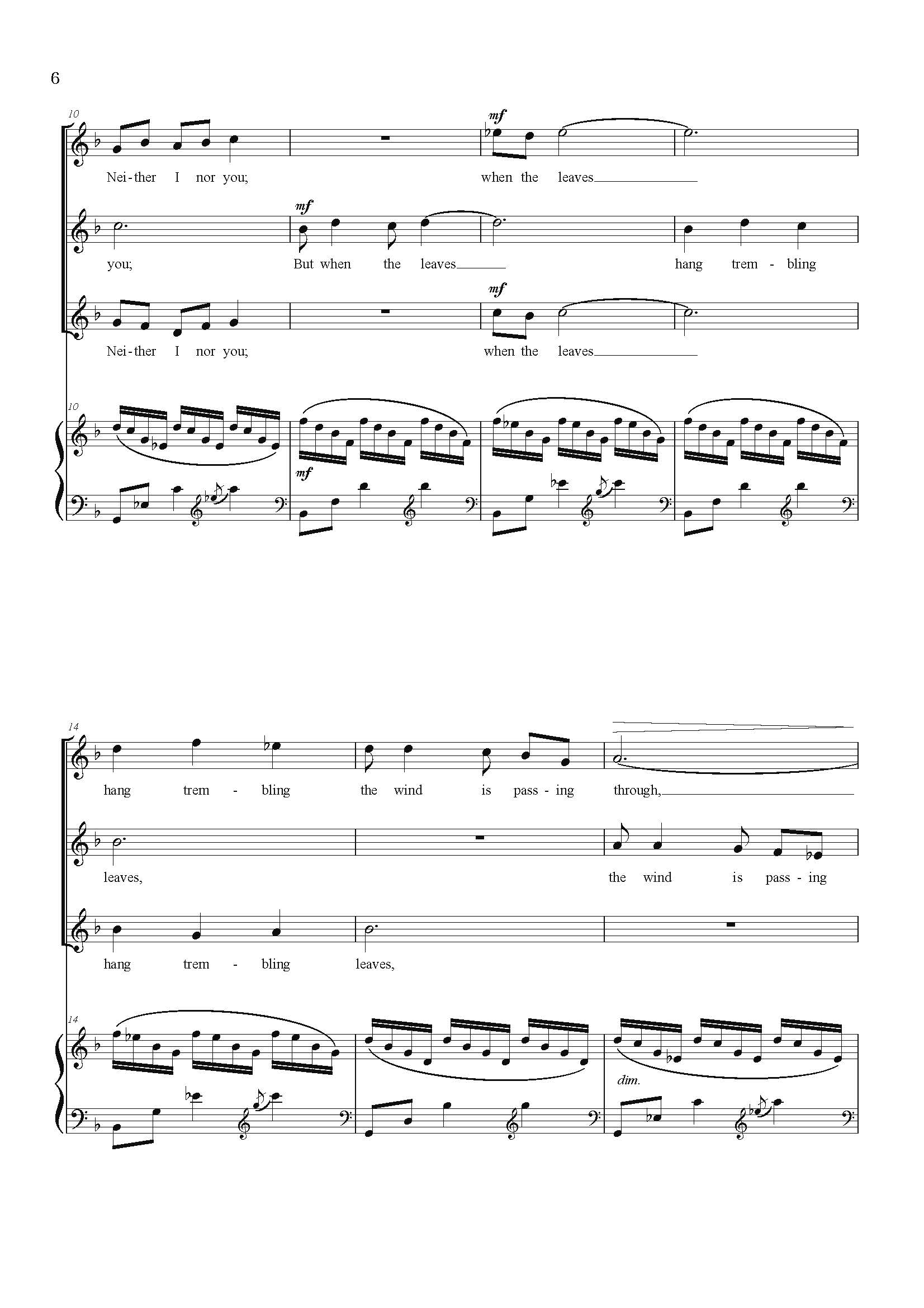Description
Composer: Vytautas Miškinis
Lyricist:
I: Christina Rosetti,
II, III: Naoko Kudo
IV: St. Ambrose,
Parts: SSA
Accompaniment: I,II,IV Piano III A cappella
Language:
I: English
II: English
III: English
IV: Latin
Performance Duration:
I: 1’50”
II: 2’30”
III: 1’40”
IV: 2’30”
Pages:
I: 8
II: 7
III: 3
IV: 7
【Performance Video】






